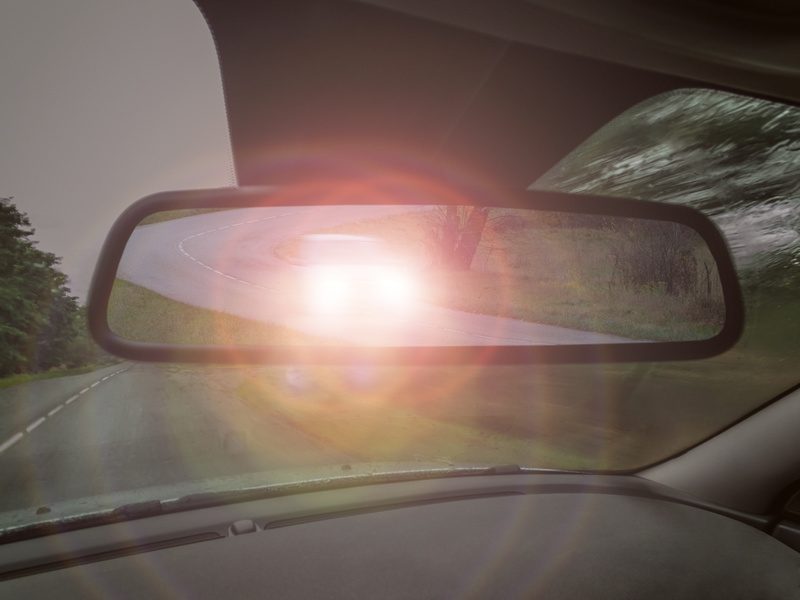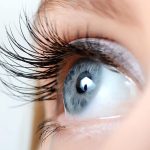Does the glare of headlights make you anxious about driving at night? Dr. Kevin Houston, a vision rehabilitation specialist at Mass. Eye and Ear, offers tips for staying safe in the dark.
It’s that time of year again. As summer comes to a close, the sun sets earlier and the days become shorter. The decrease in sunlight can also make night driving more difficult — especially if you’re older than 50.
As we age, our vision tends to gradually become worse, which can be more of a problem at night. It often takes longer for the eyes to adjust from bright light to dim light.
Common signs that you may have trouble driving at night include:
- Difficulty with oncoming headlights
- Difficulty seeing lane markings
- Needing to drive slowly
- Difficulty seeing street signs
- Difficulty judging distance and speed
Here are some things you can do to make it easier to navigate at night.
Clean Your Windows and Mirrors
A dirty windshield may not be noticeable during the day, but it can cause glare at night.
Dirt and grime can also build up on your headlights, says Kevin Houston, OD, MSc, an optometrist in the Vision Rehabilitation Service at Mass. Eye and Ear. Check them regularly to make sure they are clean. See your mechanic to upgrade bulbs and polish covers.
Dim Your Dashboard
Bright lights from the dashboard and instrument panel of the car can distract you from the road. And if you’re using GPS navigation, turn on the night mode.
Use the Night Setting on Your Rearview Mirror
Most rearview mirrors have settings to reduce the brightness and glare of headlights behind you. Check your manual for instructions.
Don’t Look at Oncoming Headlights
When oncoming traffic approaches, it’s best to keep your gaze at the right-lane marking or look straight ahead, trying not look directly at the headlights.
“Staring at bright lights can temporarily affect your visibility at night,” Dr. Houston said. “And, as we age, it often becomes increasingly difficult to adjust from bright light to dim light.”
Decrease Your Speed
If you have trouble seeing, reduce your speed and increase your following distance behind the car in front of you.
Skip the Yellow-Tinted Glasses
Glasses that have a tinted yellow hue are often marketed as specialized night-vision glasses that can improve contrast and reduce glare. But beware — there is a lack of evidence that they improve nighttime visibility. In fact, since they reduce the amount of light that enters the eye, they may make it harder to see, not easier.
Instead, Dr. Houston recommends wearing eyeglasses with an anti-reflective coating. This helps to prevent light from bouncing around inside your lenses.
Schedule an Annual Eye Exam
Dr. Houston also stresses the importance of having an annual eye exam. “It’s important that your prescription is up to date. But it’s also critical to screen for potential eye conditions — like cataracts or glaucoma — that could contribute to poor night vision,” he said.
About our Expert
 Kevin Houston, OD, MSc, is an optometrist in the Vision Rehabilitation Service at Mass. Eye and Ear. He sees patients at the main campus (243 Charles Street, Boston).
Kevin Houston, OD, MSc, is an optometrist in the Vision Rehabilitation Service at Mass. Eye and Ear. He sees patients at the main campus (243 Charles Street, Boston).




I am interested in any new advice about my eyes. I am glad to know about those yellow glasses. After wearing them one time I got rid of them. i could tell that they were not working.
Use visor at night to prevent bright light exposure to the eyes from various sources, i.e. full moon, street lights, interchange lights, construction flood lights, LED billboards, security lights, sports venue lights, store front or parking lot lights.
Even if your near vision is good, have your distance sight tested and make sure any astigmatism is corrected. These can often be overlooked during daytime driving but really show themselves at night.
Thank you
Thank you; these are good tips.
When driving at night, I have trouble having enough time adjusting and judging the changes in the road. The lines on the road, the curvature, intersections, etc. all seem to come in the the headlight lit area too fast and I can’t react quickly enough. I can’t see where the road goes. It’s getting scary. 65 years old. Otherwise distance vision is fine. Any thoughts? Thanks.
One way to see better while driving at night is to outlaw low beams with more lumens than a halogen high beam.
Hi Max
I agree in respect of LED lights which I am sure are great for seeing but provide unacceptale glare to oncoming motorists, especially on narrow roads with sweeping bends and undulations of which there is a plethora on UK roads. My other major concern is badly adjusted headlights especially when that bad adjustment is on the offside lamp. This bad adjustment is illegal but I have yet to have hear of a case where a motorist has been prosecuted.(nb. It is also an MOT failure).
great advice